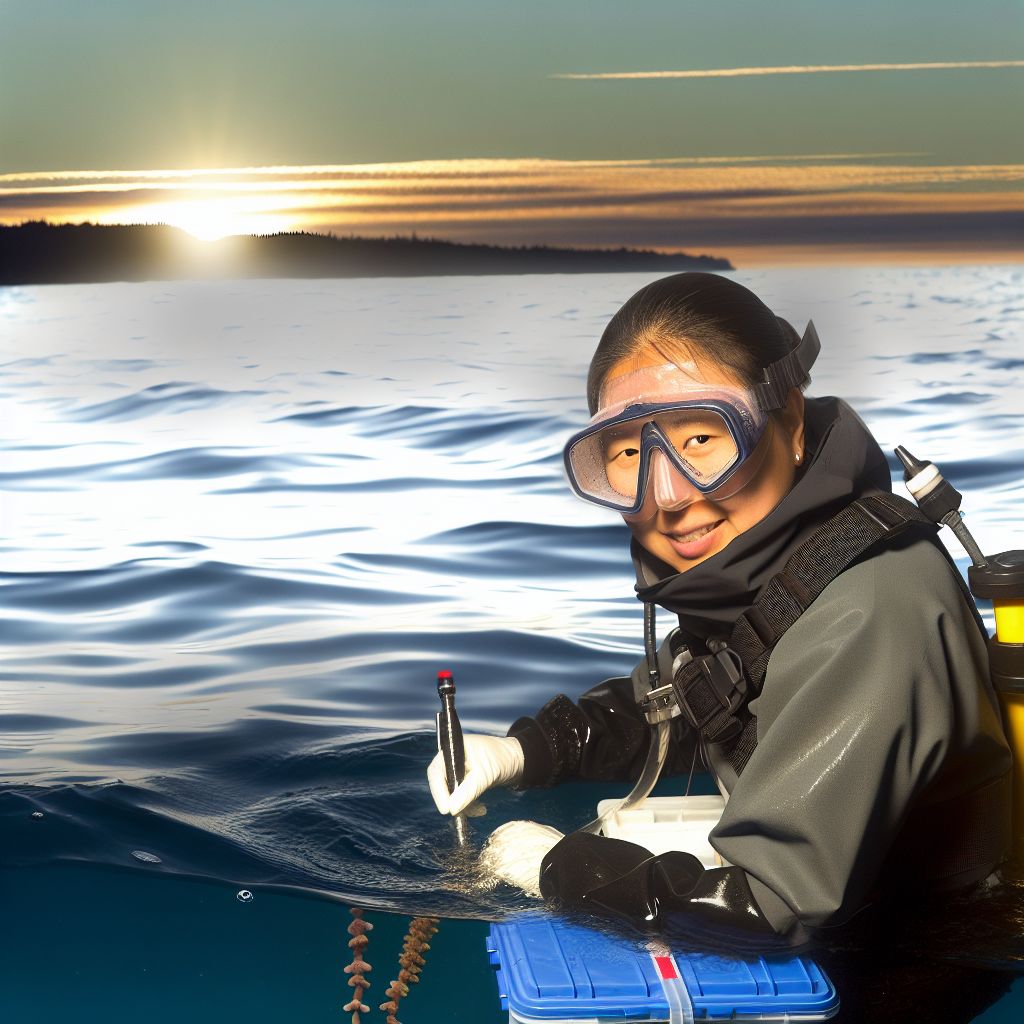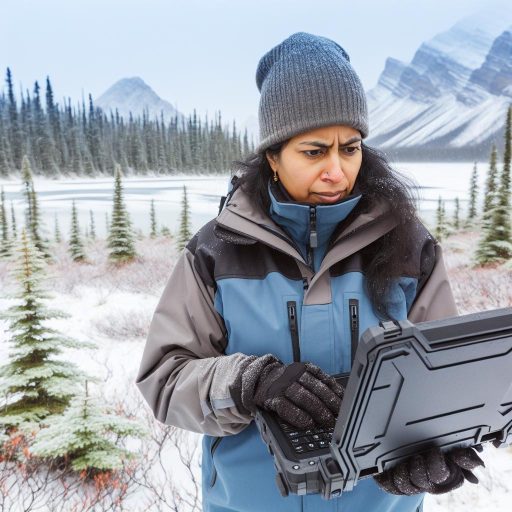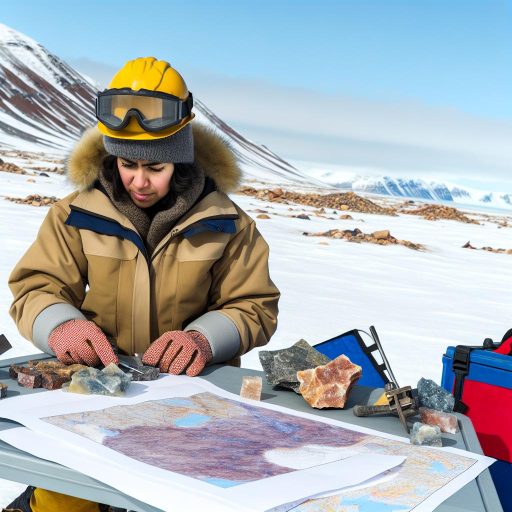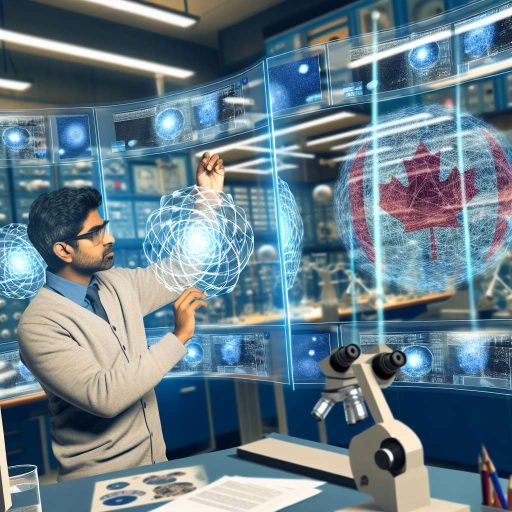Introduction to Oceanography and Its Relevance to Marine Conservation
Understanding Oceanography
Oceanography is the study of the ocean’s physical, chemical, and biological properties.
It encompasses various aspects, including ocean currents, marine life, and ecosystems.
Oceanographers investigate how these factors interact to shape the marine environment.
Through research and exploration, they gather crucial data about the ocean.
This knowledge forms the foundation for marine conservation efforts.
Importance of Marine Conservation
Marine conservation aims to protect ocean ecosystems and biodiversity.
Healthy oceans are vital for sustaining life on Earth.
They support fisheries, regulate climate, and provide oxygen.
However, pollution, overfishing, and climate change threaten these precious resources.
Effective conservation strategies are essential for reversing this damage.
The Role of Oceanographers in Conservation
Oceanographers play a pivotal role in marine conservation.
They provide valuable insights into ocean health and dynamics.
They monitor changes in ecosystems and alert policymakers to emerging threats.
Moreover, they offer scientific evidence for conservation policies and practices.
Oceanographers collaborate with conservation organizations and governments.
Tools and Techniques Used by Oceanographers
They employ various tools to study the marine environment.
Remote sensing technology allows oceanographers to collect data from afar.
Submersibles and autonomous underwater vehicles conduct in-depth explorations.
Data collected helps in understanding oceanographic phenomena.
These tools facilitate the assessment of ecosystem health.
Case Studies in Marine Conservation
Several successful conservation initiatives highlight oceanographers’ contributions.
The Coral Triangle Initiative, for instance, aims to protect coral reefs.
Oceanographers documented coral health trends and recommended protective measures.
Another project focused on the recovery of endangered species, such as sea turtles.
Research results informed stricter regulations on fishing practices.
Unlock Your Career Potential
Visualize a clear path to success with our tailored Career Consulting service. Personalized insights in just 1-3 days.
Get StartedRoles of Oceanographers in Assessing Marine Ecosystems
Monitoring Marine Biodiversity
Oceanographers play a crucial role in monitoring marine biodiversity.
They collect data on various species within ecosystems.
This data helps in understanding species distribution and abundance.
Furthermore, they assess the health of various marine habitats.
Conducting Environmental Impact Assessments
Environmental impact assessments are vital before any coastal development.
Oceanographers evaluate potential impacts on marine environments.
They analyze how changes may affect marine life and ecosystems.
This proactive approach helps mitigate negative consequences.
Researching Climate Change Effects
Oceanographers investigate the impact of climate change on oceans.
They study ocean warming and acidification trends.
Moreover, they assess how these factors influence marine species.
This research is essential for creating effective conservation strategies.
Implementing Conservation Strategies
Based on their research, oceanographers help implement conservation strategies.
They collaborate with policymakers to develop marine protected areas.
Additionally, they provide guidance on sustainable fishing practices.
Their expertise ensures that conservation efforts are science-based and effective.
Educating the Public and Stakeholders
Education is a vital part of the oceanographer’s role.
They share findings with local communities and stakeholders.
By enhancing public awareness, they encourage community involvement in conservation.
Increased understanding promotes better stewardship of marine resources.
Importance of Data Collection and Analysis in Marine Conservation Efforts
The Role of Oceanographers
Oceanographers play a crucial role in marine conservation.
They collect and analyze data essential for understanding marine ecosystems.
This data informs policy decisions and conservation strategies.
Types of Data Collected
Oceanographers gather various types of data.
- Temperature and salinity measurements help assess habitat conditions.
- Biodiversity surveys track species populations over time.
- Water quality tests provide insights into pollution levels.
These data types form the backbone of conservation efforts.
Data Analysis Techniques
Data analysis techniques vary greatly among oceanographers.
Statistical models help predict the impact of environmental changes.
Geographic Information Systems (GIS) visualize habitat distributions.
Furthermore, machine learning techniques uncover patterns in large datasets.
Impact on Policy and Management
Accurate data shapes effective marine conservation policies.
For example, oceanographers advise governments on sustainable fishing practices.
They also identify critical habitats that need protection.
This information leads to the establishment of marine protected areas.
Collaborative Efforts
Oceanographers often collaborate with policymakers and conservationists.
These partnerships enhance the impact of data-driven initiatives.
For instance, joint projects address specific environmental crises.
Such collaboration maximizes resources and expertise in conservation efforts.
See Related Content: Benefits of a Career in Genetics for Science Enthusiasts
Contributions of Oceanographic Research to Understanding Climate Change Impacts on Oceans
Climate Change and Ocean Conditions
Oceanographers study how climate change alters ocean conditions.
They observe temperature changes in ocean waters over time.
Research shows that increased carbon dioxide levels cause ocean warming.
This warming affects marine ecosystems and biodiversity.
Furthermore, changes in ocean acidity impact marine life significantly.
Impact on Marine Life
Rapid climate change threatens many marine species.
Coral reefs, for instance, experience bleaching due to rising temperatures.
Many fish populations struggle to adapt to these changing environments.
Oceanographic research helps identify vulnerable species at risk.
Monitoring and Data Collection
Oceanographers collect extensive data to monitor changes.
They use satellites and buoys to gather vital oceanographic information.
This data allows for accurate climate models and predictions.
Consequently, researchers can inform conservation strategies effectively.
Developing Conservation Strategies
Understanding climate change helps in creating effective marine policies.
Oceanographers collaborate with policymakers to address these challenges.
They advocate for protected marine areas based on research findings.
Such collaboration enhances the resilience of marine ecosystems.
Community Engagement and Education
Oceanographers engage with local communities to raise awareness.
They share knowledge about the importance of healthy oceans.
This engagement fosters community involvement in conservation efforts.
Ultimately, it creates a shared responsibility for marine preservation.
Discover More: What Does an Epidemiologist Do Every Day
How Oceanographers Aid in the Development of Marine Protected Areas
Understanding Marine Protected Areas
Marine Protected Areas (MPAs) offer vital refuge for marine life.
They play a significant role in preserving biodiversity.
Oceanographers analyze these areas to understand their ecological importance.
Supporting Research and Data Collection
Oceanographers conduct extensive research to gather data on marine ecosystems.
They use advanced technology to monitor ocean health over time.
This data helps identify critical habitats that need protection.
Moreover, it informs the establishment of MPAs based on scientific evidence.
Mapping Critical Habitats
Mapping underwater ecosystems is crucial for successful MPA design.
Oceanographers utilize sonar imaging and remote sensing techniques.
These tools allow them to create accurate maps of sea floor habitats.
Consequently, effective management plans can be developed to protect these areas.
Assessing the Impacts of Human Activity
Human activities pose significant threats to marine environments.
Oceanographers assess the impact of pollution, fishing, and shipping routes.
They study how these factors affect marine populations and ecosystems.
An understanding of these impacts leads to better conservation strategies.
Engaging with Policy and Management
Oceanographers collaborate with policymakers to shape MPA regulations.
Their research helps policy decisions reflect current scientific understanding.
Additionally, they engage with local communities to promote conservation efforts.
This ensures that MPAs are effective and supported by those who rely on marine resources.
Monitoring and Evaluation
Continuous monitoring is essential for MPA success.
Oceanographers implement robust monitoring programs for MPAs.
They evaluate the effectiveness of conservation strategies over time.
Regular assessments help adapt management practices as needed.
Capacity Building and Education
Oceanographers contribute to education and training in marine conservation.
They offer workshops and resources for local stakeholders.
These efforts enhance community engagement in MPA management.
Ultimately, informed communities are critical to the success of conservation initiatives.
Learn More: Wildlife Biologists’ Impact on Climate Adaptation

The Application of Technology and Remote Sensing in Oceanographic Studies for Conservation
Innovative Technological Tools
Oceanographers use a variety of innovative tools to support marine conservation efforts.
Satellite imagery plays a crucial role in monitoring ocean health.
These images help scientists track changes in sea temperature and algal blooms.
Additionally, underwater drones provide real-time data about marine ecosystems.
These drones can access hard-to-reach locations, expanding research possibilities.
Remote Sensing Capabilities
Remote sensing technologies allow oceanographers to collect vast amounts of data.
This data aids in assessing the impact of human activities on marine habitats.
High-resolution satellite data enhances the accuracy of environmental studies.
As a result, oceanographers can make informed decisions regarding conservation strategies.
Monitoring Marine Biodiversity
Monitoring marine biodiversity is paramount for effective conservation.
Technological advancements have improved species tracking and identification.
Acoustic sensors and cameras document marine life in their natural habitats.
These tools contribute to understanding species distribution and population dynamics.
Data-Driven Conservation Strategies
Oceanographers leverage technological data to inform conservation policies.
This data provides evidence for protecting critical habitats and species.
Additionally, it helps in identifying areas most impacted by climate change.
As a result, marine conservation becomes more targeted and effective.
Gain More Insights: What Aspiring Geneticists Should Know Before Starting Out
Collaboration Between Oceanographers and Policymakers
Importance of Data in Conservation Efforts
Oceanographers gather crucial data about marine ecosystems.
This data informs policymakers on the state of ocean health.
By using this information, they can develop targeted conservation strategies.
Accurate data helps to prioritize areas needing urgent attention.
Sharing Knowledge for Effective Policy Making
Oceanographers frequently engage in knowledge-sharing sessions with policymakers.
These sessions help bridge the gap between science and policy.
Such collaborations ensure that policy decisions are based on the latest research.
Moreover, they foster understanding of complex marine systems.
Joint Projects to Enhance Marine Protection
Collaboration often leads to joint research projects.
These projects can address pressing marine issues like overfishing and pollution.
Through partnerships, oceanographers and policymakers create comprehensive action plans.
Such plans consider scientific, economic, and social factors.
Community Involvement and Education
Effective marine conservation requires community involvement.
Oceanographers play a key role in public education initiatives.
They help communities understand the importance of healthy oceans.
Additionally, they encourage local stewardship and engagement in conservation efforts.
Evaluating the Impact of Conservation Strategies
Oceanographers help evaluate the effectiveness of conservation strategies.
They monitor changes in marine environments over time.
This ongoing assessment aids in refining policies and practices.
By using scientific analysis, they ensure adaptive management of marine resources.
Case Studies Showcasing Successful Oceanographic Contributions to Marine Conservation Initiatives
Protecting Coral Reefs in the Caribbean
Oceanographers played a vital role in coral reef restoration projects.
Dr. Emily Jensen led a team assessing reef health and biodiversity.
They developed strategies to enhance coral resilience to climate change.
Furthermore, their research informed local governance policies.
As a result, marine protected areas were established in key regions.
Mitigating Plastic Pollution in the Pacific Ocean
Oceanographers collaborated with NGOs to address plastic waste.
Dr. Miguel Torres conducted research on ocean currents and debris dispersion.
His findings helped design targeted cleanup operations.
Moreover, educational campaigns emerged to raise public awareness.
This initiative significantly reduced plastic pollution in affected areas.
Monitoring Marine Mammals in Arctic Waters
In the Arctic, oceanographers track marine mammal populations.
Dr. Sarah Patel utilized advanced tagging technology to gather data.
Her research assessed the impact of climate change on habitats.
Consequently, conservation efforts focused on critical migration routes.
The initiative contributed to the establishment of protected marine zones.
Enhancing Fishery Management in the Atlantic
Oceanographers supported sustainable fishing practices in the Atlantic.
Dr. Robert Lee conducted studies on fish populations and habitats.
His data assisted regulators in developing science-based quotas.
Additionally, community engagement fostered cooperative management efforts.
This collaboration led to healthier fish stocks and increased yields.
Additional Resources
Marine Protected Areas Exemplify the Evolution of Science and …




